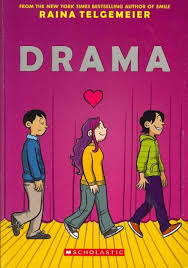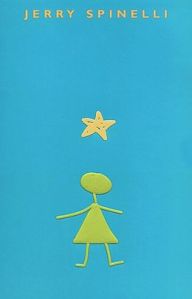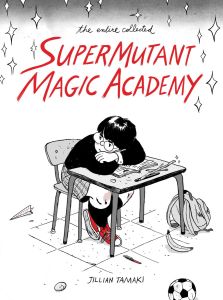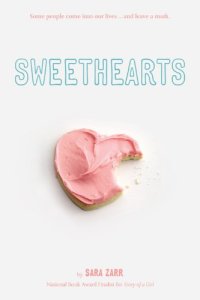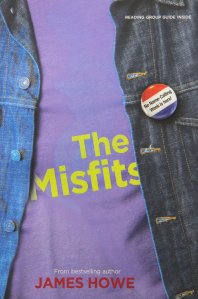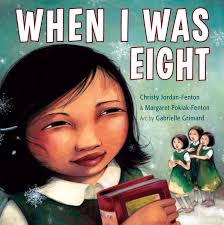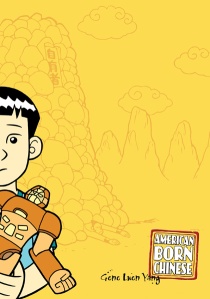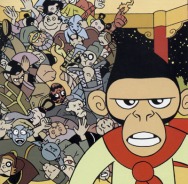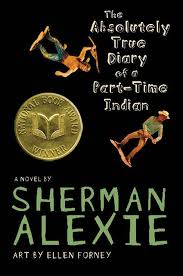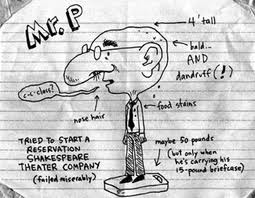Moose
Max De Radiguès
Published by Conundrum International, 2015

Disclaimer: this graphic novel depicts graphic physical and sexual violence. Please consult your guardians before reading this book.
The Story: Joe is being relentlessly bullied, both psychically and psychological, at school by Jason. It is in the natural world that Joe finds some peace and comfort, but when Jason bombards Joe’s one place of safety, a chance event leads to a shift in the boys’ power dynamics and leaves Joe with a difficult moral dilemma which will have you questioning not only the choice Joe makes, but the choice you would in his shoes.
What Wallace and I Think: Moose was originally written in French and appeared as mini-comics that were eventually published as a collection. De Radiguès translated Moose into English, and the English version was very recently published by the Canadian publisher, Conundrum.
De Radiguès’s comic is drawn simply with black and white images. It feels like a quiet story, as there is little text, and often there are full pages with no text at all. The scenes in which Joe is bullied by Jason are filled with the verbal and psychological abuse that Jason spews. But when Joe is alone, often immediately following these bullying scenes, the reader instead is shown how Joe is coping visually. Indeed, we rarely read any dialogue that is spoken by Joe, and when he does, often the speech bubbles and text are drawn “wobbly” to indicate the difficulty Joe has speaking for himself (and by extent standing up for himself, for this has dangerous consequences).
Though the comic is drawn simply with clean lines, De Radiguès details the bullying Joe faces in a way that, at least for me, brings a complex emotional rise out of the reader. The injustice, unfairness, and out-right cruelty of Jason to Joe is the focal point for much of the story, making the reader side completely with Joe, as there isn’t any sympathetic explanation for why Jason acts the way he does. Making Joe so sympathetic, and Jason so completely unsympathetic, indeed a hateful character, is part of the complexity of the graphic novel, for it makes the moral dilemma in the latter half of the book all the more complicated. Making Joe such a victim and Jason such a villain is a trap! And I fell right in! For me, without giving anything away, the novel’s climax and end led me to interrogate the hatred I felt towards Jason (that had me wishing he could experience some of his own medicine), and whether Jason’s fate is justified by his treatment of Joe (for I was wishing something horrible would happen to Jason through most of the book), and of course led me to wonder what decision I would make in Joe’s position, and the moral implications of what my decision would be.
Moose is a fast read (took me about half an hour) but it made me reflect long after I had finished reading it. I felt uncomfortable with what I discovered about myself during these reflections. As someone who tries to live by the creed of “Do No Harm,” and bell hook’s call to choose love, because doing so is a revolution, I was shocked at the vehemence of hateful and violent thoughts I had towards Jason. But I think this is exactly what the graphic novel is designed to do. It is the graphic novel’s ability to haunt you after reading that makes this something young adults and adults should read. If you are in school, and dealing with situations similar to Joe’s, it may open up an interesting space to interrogate your own feelings and position. This graphic novel is powerful not only due to the story it tells, but in its implicating gaze outwards towards the reader.
And there’s a Moose. So, read it peeps!


